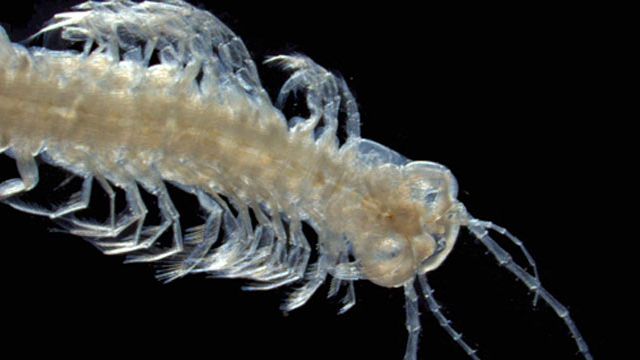World's first venomous crustacean found in WA
ninemsn staff
12:36pm October 25, 2013

The crustaceans are found in underwater caves of the Caribbean, Canary Islands and Australia. (Supplied)
The blind "remipede" poisons its prey with a similar kind of venom to that found in rattlesnakes, the BBC reports.
The venom contains a complex cocktail of poisons, including a paralysing agent, which breaks down a prey's body tissue, allowing the remipede to suck out a kind of liquid meal from its victim's exoskeleton.
The deadly crustacean can also be found in underwater caves of the Caribbean and Canary Islands and usually spends its time feeding on other small animals.
Dr Bjoern von Reumont from the Natural History Museum in London detailed the discovery in the journal Molecular Biology and Evolution.
"This is the first time we have seen venom being used in crustaceans and the study adds a new major animal group to the roster of known venomous animals," he wrote.
CORRECTION: An earlier version of this story mistakenly identified the remipede as a crab. While both species are crustaceans, their features are quite different. A remipede looks more like an underwater centipede, with head and an elongate trunk of up to forty-two similar body segments.
Source: BBC, Natural History Museum
Author: Natasha Lee, Approving editor: Nick Pearson
[The ones in the Canary Islands and Caribbean suggest a Transatlantic landbridge link in earlier times. The friend that sent this into me suggested a Sundaland connection for the Australian kind-DD]

No comments:
Post a Comment
This blog does NOT allow anonymous comments. All comments are moderated to filter out abusive and vulgar language and any posts indulging in abusive and insulting language shall be deleted without any further discussion.